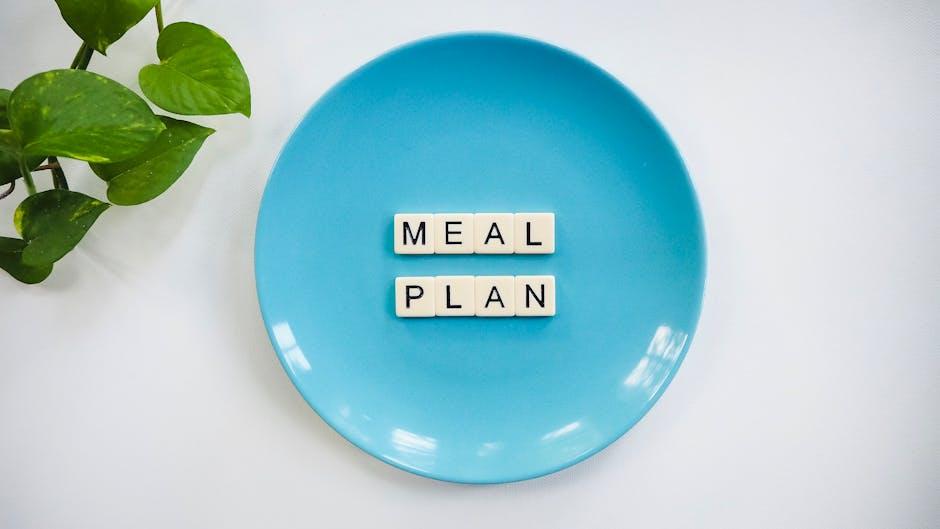Table of Contents
- Understanding the Basics of a Food Budget for Three People
- Essential Strategies for Reducing Grocery Costs
- Meal Planning Tips to Maximize Your Budget
- Healthy Eating on a Budget: Quality Without Compromise
- Smart Shopping Habits for Budget-Conscious Families
- Q&A
- Final Thoughts


Understanding the Basics of a Food Budget for Three People
Creating a food budget for a household of three involves careful planning and consideration of dietary preferences, lifestyle, and local grocery prices. Start by assessing how much you currently spend on food each month and identify the types of food and meals you enjoy. This insight will enable you to set realistic limits without sacrificing nutrition or enjoyment. Taking a few minutes each week to track your spending can reveal patterns and help you make adjustments where necessary.
Next, consider making a list of staple items that are essential for your meals. These can include:
- Grains: rice, pasta, and bread
- Proteins: chicken, beans, and tofu
- Dairy: milk, cheese, and yogurt
- Fruits & Vegetables: seasonal produce and frozen varieties
- Snacks: nuts, bars, and popcorn
By establishing a core list, you can minimize impulse purchases and ensure that you always have the ingredients needed for nutritious, filling meals.
To visualize your budget and track your spending more effectively, consider using a simple monthly food budget table. The following table can help you break down your allocations while ensuring each category is covered:
| Category | Monthly Budget |
|---|---|
| Groceries | $400 |
| Dining Out | $150 |
| Snacks & Treats | $50 |
By regularly reviewing your expenditures in these categories, you can adjust where necessary, allowing for occasional splurges while staying on track with your overall food budget. Keep in mind that meal prepping and understanding seasonal discounts can also yield significant savings. The key is consistency and making a habit of budgeting, which can lead to greater financial and nutritional stability for your household.


Essential Strategies for Reducing Grocery Costs
One of the most effective ways to cut down on grocery expenses is by planning meals ahead of time. By creating a weekly meal plan, you can compile a comprehensive shopping list that targets only the ingredients you need. This strategy not only reduces impulse buying but also helps in utilizing leftovers efficiently, which often gets overlooked. Consider focusing on recipes that share common ingredients to minimize waste.
Another practical approach is to embrace the concept of bulk buying for non-perishable items. Purchasing staples such as rice, pasta, canned goods, and spices in larger quantities typically yields significant savings. These items have a longer shelf life and can be integrated into various meals. Just remember to check for sales and coupons, as deals can make bulk buying even more economical.
Lastly, make use of local resources such as farmers’ markets or community-supported agriculture (CSA) programs. By buying directly from producers, you can often find fresher produce at a lower price compared to supermarkets. Additionally, consider growing your own herbs and vegetables if space allows; even a small windowsill can accommodate pots. This not only saves money but also adds flavor and freshness to your meals.


Meal Planning Tips to Maximize Your Budget
When it comes to feeding a family of three on a budget, effective meal planning can be your best ally. Start by making a weekly meal plan that outlines breakfast, lunch, and dinner for each day. This not only helps you visualize your week but also significantly reduces food waste. Incorporating versatile ingredients that can be used across multiple meals will allow for greater flexibility in your cooking. For instance, an ingredient like chicken can be used in stir-fries, salads, or sandwiches, making it a cost-effective staple.
Consider shopping with a prioritized grocery list based on your meal plan. Focus on buying seasonal produce and canned or frozen items, which can be more affordable and have a longer shelf life. Keep an eye on weekly sales and discounts to take advantage of lower prices on protein sources and pantry staples. Here’s a simple table that outlines some budget-friendly food items along with their approximate costs:
| Food Item | Approximate Cost |
|---|---|
| Rice (1 lb) | $1.00 |
| Canned Beans (15 oz) | $0.80 |
| Chicken (1 lb) | $3.00 |
| Seasonal Vegetables | Varies ($0.50 – $1.50) |
A few extra tips to stretch your food budget include incorporating more meatless meals into your weekly plan. Dishes like vegetable stir-fry or pasta primavera can be satisfying, nutritious, and much less expensive than meat-based options. Additionally, focus on utilizing leftovers creatively; a roast chicken can lead to sandwiches, salads, and even soups over the following days. By implementing these strategies, you’ll find that meal planning not only optimizes your budget but also simplifies your dining experience.


Healthy Eating on a Budget: Quality Without Compromise
Eating well doesn’t have to mean breaking the bank. With a little creativity and planning, you can nourish your family with wholesome foods while keeping your grocery bills in check. The key lies in prioritizing seasonal produce, bulk items, and smart shopping habits. Start by building your meals around what’s on sale and in season. This often leads to fresher options at a lower cost. Aim to incorporate fruits and vegetables that are not only beneficial for your health but also budget-friendly.
When budgeting for three people, consider the advantages of buying in bulk. Items like grains, beans, and nuts can often be purchased at a lower per-unit cost when bought in larger quantities. These staples form the foundation of many nutritious meals, such as whole grain salads, hearty soups, and filling side dishes. Additionally, don’t overlook the power of frozen vegetables and fruits; they retain most of their nutrients and can be used in a variety of recipes, ensuring variety without compromising quality.
Here’s a simple breakdown of effective budget-friendly staples to include in your weekly shopping list:
| Food Item | Estimated Cost (per week) | Key Nutrients |
|---|---|---|
| Brown Rice | $3 | Fiber, B Vitamins |
| Canned Beans | $2 | Protein, Iron |
| Seasonal Veggies (e.g., carrots, spinach) | $4 | Vitamins, Antioxidants |
| Oats | $2 | Fiber, Muscle-Building Protein |
| Eggs | $2.50 | Protein, Omega-3 Fatty Acids |
By focusing on whole foods and making use of versatile ingredients, you can create a plethora of meals that are not only nutritious but also satisfying. Meal prepping can further enhance your budget-friendly eating; dedicate a few hours each week to planning and cooking meals in advance. This minimizes waste and ensures that when hunger strikes, you and your family can enjoy healthy, homemade options without reaching for expensive convenience foods.


Smart Shopping Habits for Budget-Conscious Families
Adopting smart shopping habits can significantly enhance your grocery budget while ensuring your family’s needs are met. Start by creating a weekly meal plan that revolves around easily available ingredients and seasonal produce. This not only minimizes waste but also enables you to buy in bulk during sales. Incorporating a variety of foods will keep meals interesting and nutritious.
Make a habit of comparing prices across different stores, including local markets, grocery chains, and discount stores. Regular price-checking can reveal which items are consistently priced lower, allowing you to adjust your shopping route efficiently. Additionally, consider using digital coupons and cash-back apps to maximize savings. With a little research, you can cut costs by a substantial margin without sacrificing quality.
Another effective way to maintain your food budget is by focusing on buying store-brand products rather than name brands. Store brands often provide the same quality at a much lower price. Buying in bulk for non-perishable items or staples such as rice, pasta, and canned goods can also yield considerable savings. Lastly, set aside time each month to review your family’s spending; this ensures you stay within your budget and adjust your shopping habits as necessary without feeling deprived.
Q&A
Q&A: Food Budget for 3 People
Q1: What is a reasonable food budget for a household of three? A1: For a household of three, a reasonable food budget typically ranges from $600 to $900 per month. This estimate can fluctuate based on factors like dietary restrictions, location, and shopping habits. Setting aside about $150 to $250 per week may help you stay on track.Q2: How can we effectively plan meals to stay within our budget? A2: Meal planning is key! Start by creating a weekly menu based on sales and seasonal produce. Incorporate versatile ingredients that can be used across multiple meals. Don’t forget to include a variety of proteins, grains, fruits, and vegetables to ensure balanced nutrition while keeping costs low.Q3: Are there specific tips for reducing grocery costs without sacrificing quality? A3: Absolutely! Here are a few strategies:- Buy in bulk: Non-perishable items like rice, pasta, and canned goods can be cheaper when bought in larger quantities.
- Shop seasonal: Seasonal fruits and vegetables are often less expensive and fresher than out-of-season options.
- Use coupons and apps: Look for digital coupons and loyalty programs in your local grocery stores for additional savings.
- Vegetable stir-fry with rice: A quick and colorful meal that uses any leftover veggies.
- Chili or soup: These are hearty and can be made in big batches, ensuring leftovers for another day.
- Pasta with marinara sauce: Simple yet satisfying; customize with veggies or ground meat for added substance.




0 Comments